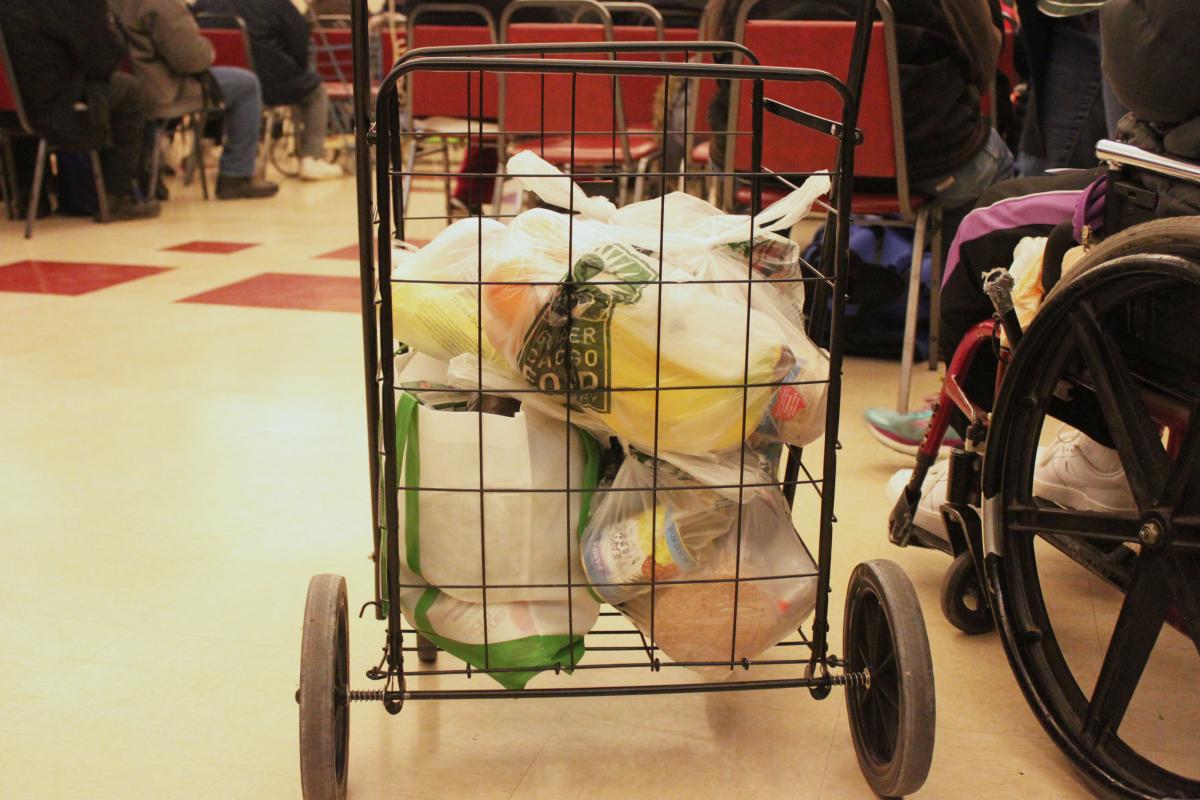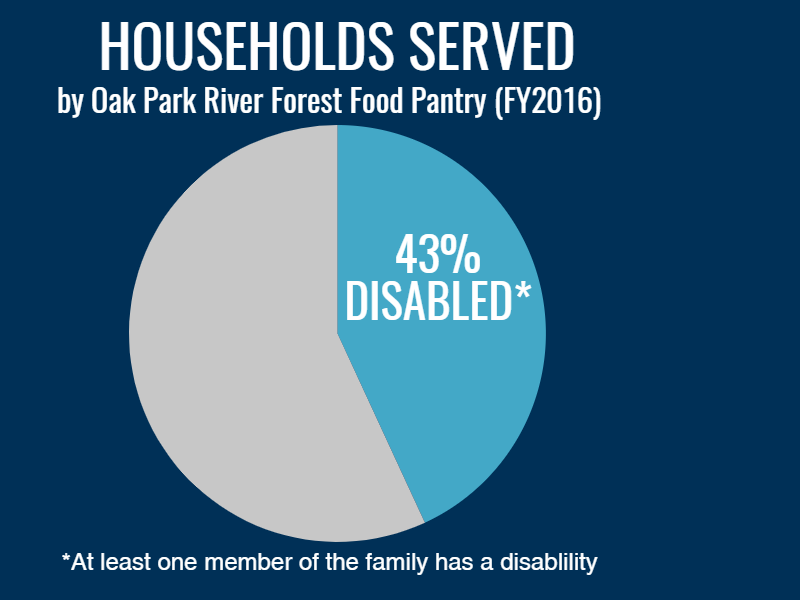Who Goes Hungry?
Food insecurity—or the lack of reliable access to sufficient food -- is complicated. It affects a whole host of different people for a multitude of reasons. But some groups of people are disproportionately affected by food insecurity; one of these vulnerable populations being disabled adults.

Nationally, nearly 1/3 of food insecure households include at least one disabled adult. Of the households we serve at the Food Pantry, 43% include at least one person with a disability. Disabled adults face multiple access and process barriers which makes getting enough food often difficult, and sometimes impossible. Some of these barriers include:
- Inadequate financial resources
- Lack of reliable, affordable transportation
- Inability to enter certain buildings (stores, food pantries, soup kitchens, social service offices)
- Low awareness of food assistance programs
- Difficulty preparing foods
- Extensive travel between healthcare, disability service and food providers
- Special dietary requirements
With these barriers, it should be no surprise that 31% of U.S households--and locally in Cook County 1/3rd --of households that include a disabled, working-age adult are food insecure. Compare this to Cook County households with no disabled working-age members, 8% of which are food insecure.
Here at the Food Pantry, we’re trying to best accommodate the disabled adults who need our help. We do this by allowing family and friends to come as proxy for people with disabilities. For those who can make it to the Food Pantry, but have limited mobility, we provide personal shoppers who shop for them. And for those who are eligible, we have a Home Delivery program that brings groceries to them.

Having a disability makes life harder – from accessing suitable housing, finding a job, running errands, to taking public transportation. We’re trying to minimize those hardships by ensuring those who need it have access to nutritious food.
For further information on the relationship between disability and food insecurity, we recommend reading the GCFD report that inspired this post.